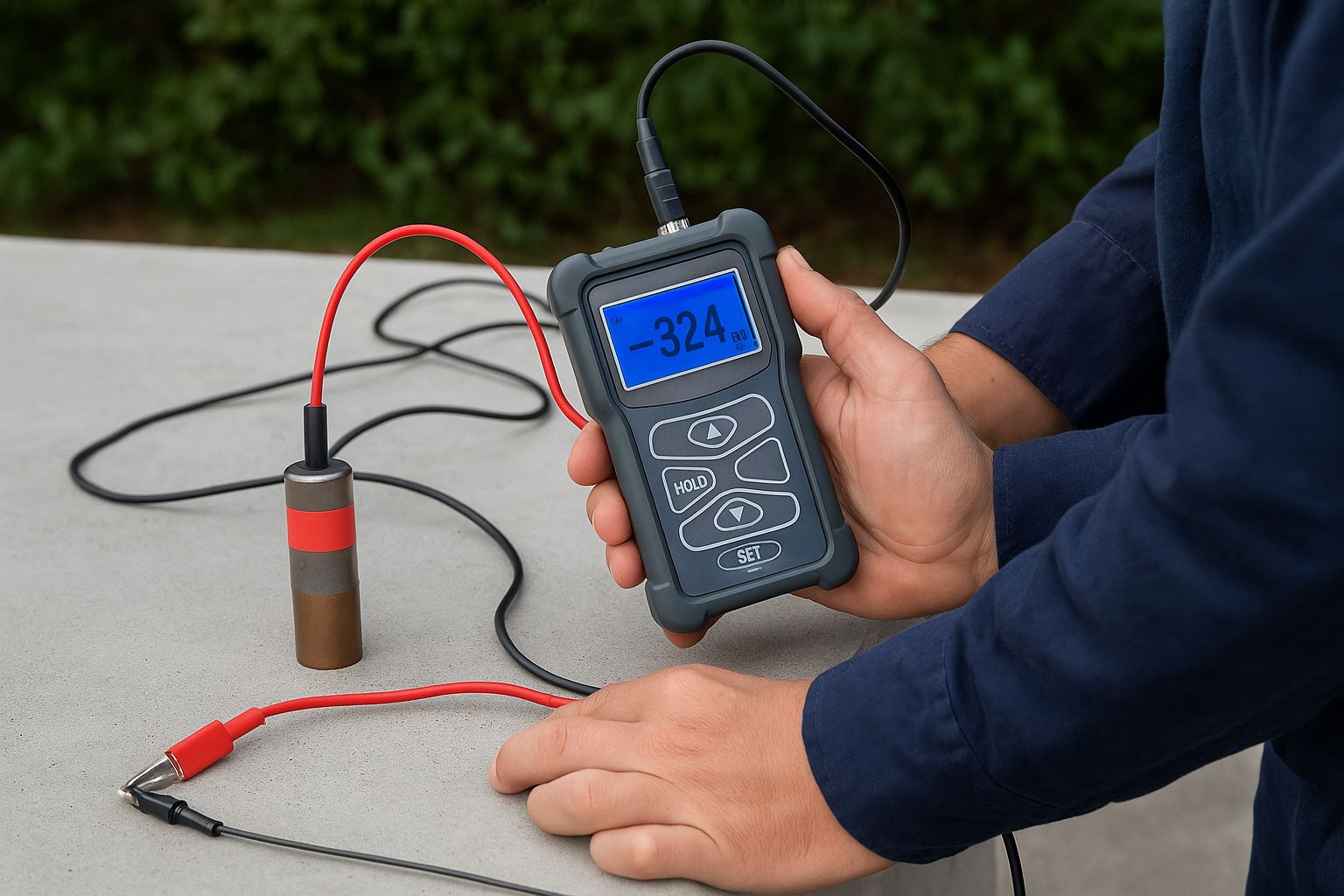Half Cell Potential Testing is a non-destructive electrochemical method used to evaluate the likelihood of corrosion in steel reinforcement within reinforced concrete structures. The test measures the electrical potential difference between the embedded steel and a reference electrode placed on the concrete surface, indicating areas at risk of corrosion activity.
Applications of Half Cell Potential Testing:
Method Used: A reference electrode (commonly copper-copper sulfate or silver-silver chloride) is placed on the concrete surface, and a voltmeter is used to measure potential differences. Readings are interpreted as per ASTM C876 to assess corrosion risk levels.

We provide accurate Half Cell Potential Testing services with detailed reports, helping industries and infrastructure sectors identify corrosion risks early and implement effective maintenance and rehabilitation strategies.
Enquiry